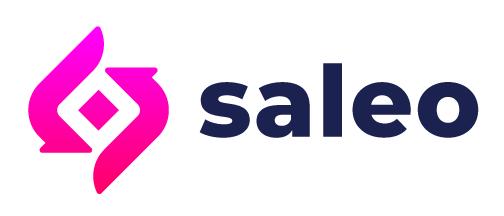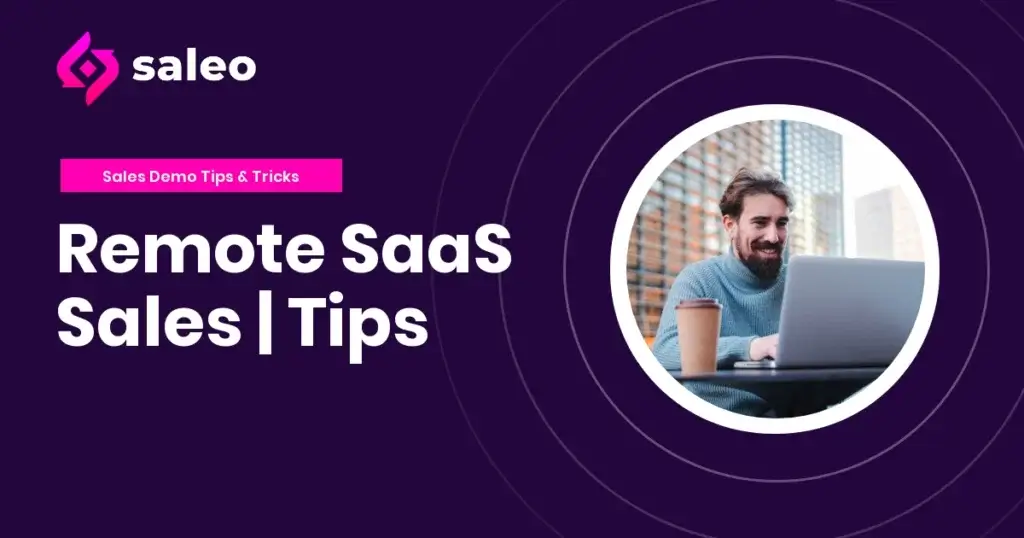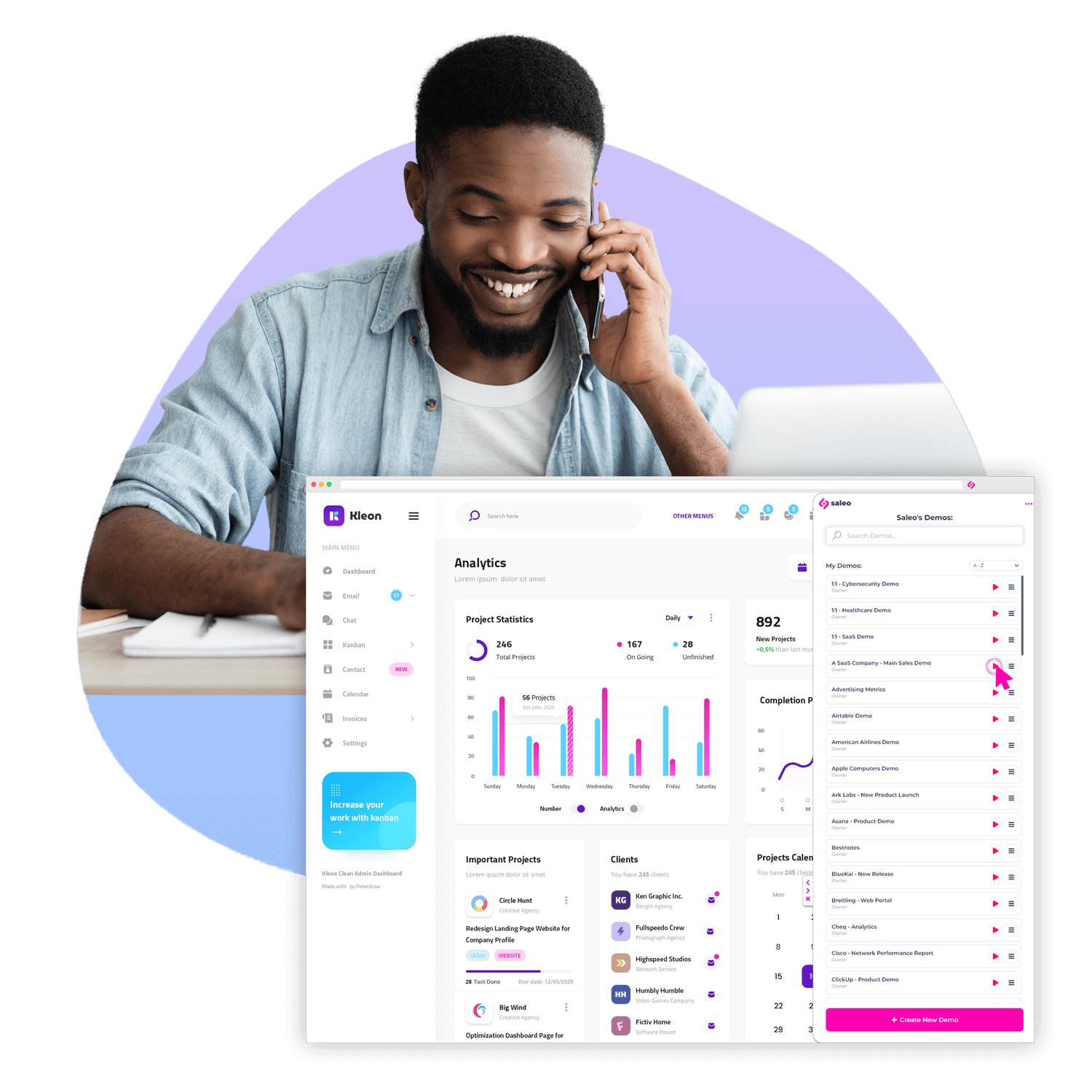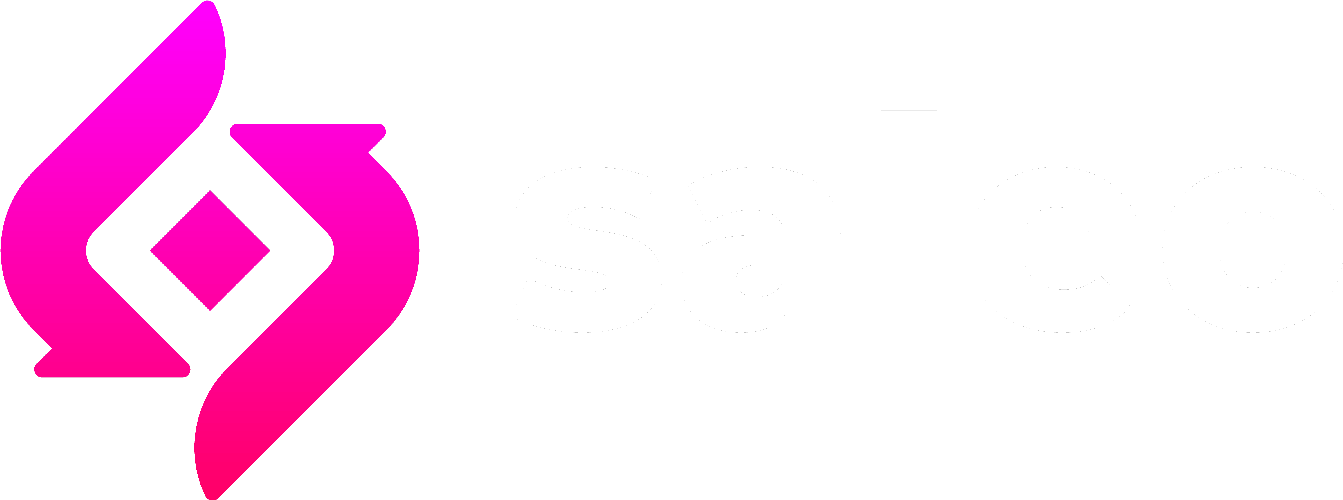Remote SaaS sales can be tricky. Your sales team is physically disconnected from your buyers, so you need to use a range of tactics to help maintain engagement with customers and effectively close deals.
Luckily, there are many different tools and tactics that salespeople can use to sell software remotely. By following a few best practices, boosting remote SaaS sales doesn’t have to be a significant challenge.
We’ll break down the best tactics to do this in the guide below.
Remote SaaS Sales Tips
Selling software remotely comes with its own set of challenges and strategies. Here are some of the best tips to help you improve remote SaaS sales.
Understand Your Product
Before you start remote SaaS selling, you’ll need to thoroughly understand your product. The better your sales team understands your product and how to use it, the easier it will be to display your product’s value to prospects.
Know your software’s features, benefits, and how it addresses the pain points of your target audience. This knowledge is crucial for effective communication with potential customers. And, when you offer live product demos, you’ll need your sales team to be equipped to handle any questions about your software and its use cases.
Build a Strong Online Presence
A fundamental part of remote SaaS selling is developing a strong online presence. Your buyers will likely discover your business online and be online through all touchpoints during the sales cycle. So, the more prominent you are online, the more streamlined your selling process could be.
Establish yourself and your company as industry experts through social media, blogs, webinars, and podcasts. A robust online presence can create brand credibility and attract potential customers.
Publishing valuable content can also help to answer customer questions and help educate prospects about your SaaS product.
Segment Your Audience
Knowing our audience is key to remote SaaS selling. The deeper you understand your audience, the easier it will be to address their pain points and sell to them.
It’s important to note that your target audience won’t all be the same. Instead, you’ll likely have various target audience segments.
Identify your ideal customers and segment them based on factors such as industry, company size, and pain points. This helps tailor your sales approach to each segment’s unique needs.
Once your segments are in place, it will be easier to follow through with the right kind of messaging and demo environments for your different customers.
Personalize Outreach
Generic sales pitches are often ineffective. Personalize your outreach by addressing specific pain points and showing how your SaaS solution can solve them. Use the prospect’s name and refer to their company’s challenges to make your pitch more engaging.
This will be made easier by segmenting your target audience and approaching each segment with a unique sales perspective. However, the better your sales team gets to know each prospect and their pain points, the more effectively they can reveal the value of your software product.
Use Live Demos
Visual demonstrations of your SaaS product can be highly effective in conveying its value. This is probably the most crucial step in your remote SaaS sales process.
Use your demo to showcase the key features and benefits of your product. Personalize the demo environment to speak more effectively to each buyer.
As your sales team will be remote, a live demo is the one time when your salesperson can connect with the buyer. The more compelling the demo is, the greater your chances of winning the sale will be.
Highlight ROI
Purchasing software can be a significant investment. Your sales team should show prospects just how worthwhile this investment will be!
Demonstrate the return on investment (ROI) your SaaS product offers. Show potential customers how it can save them time, money, or resources, and provide case studies or testimonials to back up your claims.
Offer Free Trials
Providing a limited-time free trial allows prospects to experience your SaaS product’s benefits firsthand. Make sure the trial period is sufficient for them to explore its features and understand its value.
While this doesn’t match every business model, a free trial can be a great way to boost remote SaaS sales. Once the prospect is hooked on using your product, they’ll have a hard time resisting a purchase.
Leverage Sales Tools
Remote SaaS sales should involve connecting as deeply as possible with your buyers. Various sales tools exist to help you streamline your recess and create better experiences with your buyers.
Utilize sales enablement tools such as CRM systems, email tracking software, and video conferencing platforms to streamline your sales process and keep track of interactions. Using a live demo experience platform will also make an enormous difference in the quality of sales demos you hold.
Follow Up
Don’t assume that a single interaction will lead to a sale. Follow up with prospects after initial contact to answer questions, provide additional information, and nurture the relationship.
80% of sales involve an average of five follow-ups to close the deal. While there’s a fine line between being persistent and being annoying, it’s generally worth following up with prospects more times than you initially think you should.
Conclusion
Remote SaaS sales processes may look slightly different for each company. However, the tips and strategies above can help any sales team boost their win rates – regardless of what you’re selling or who you’re selling it to.
If you’re looking to improve your prospect engagement during remote SaaS sales cycles, consider optimizing your product demos. With Saleo, you can create captivating demos with ease. Request a demo today to see how the platform can boost your sales game.





